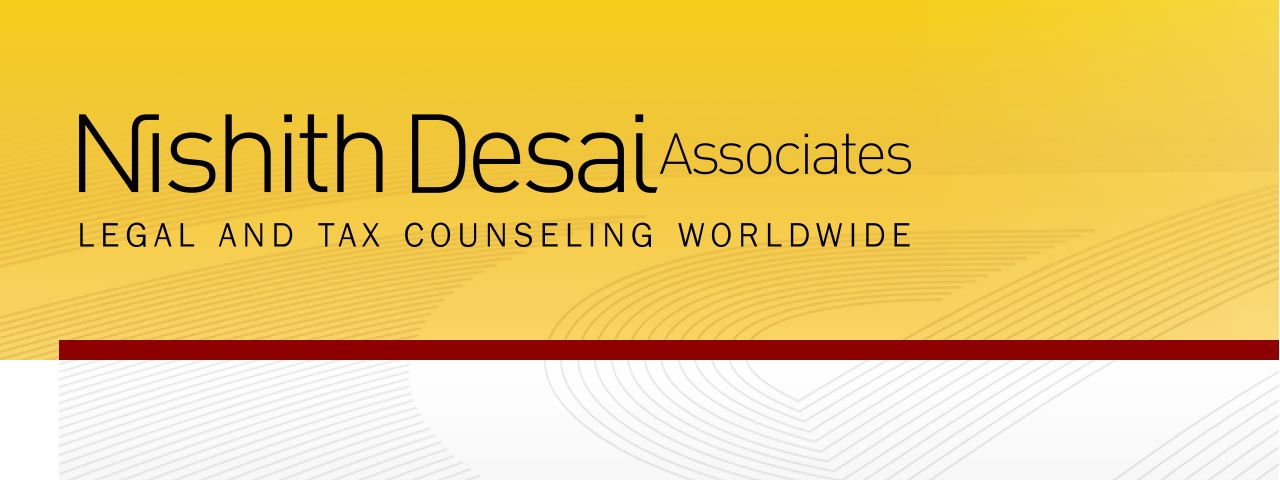Technology & Tax SeriesJune 29, 2020 Technology & Tax Series – Issue II: India Equalization levy expanded – a surprise move!The COVID-19 pandemic has brought the world economy on its knees and it is estimated that the government deficits worldwide could reach to USD 30 trillion by 2023.1 While most businesses are suffering amidst the COVID-19 crisis, the digital economy in general has been resilient from the impact of the pandemic. Unsurprisingly, not only there is a pressing need to bolster tax revenue, the digital economy offers an attractive source for deriving such revenue. The Finance Minister of France while informing that France will introduce a digital tax stated that “Never has a digital tax been more legitimate and more necessary”.2 Recently, the US Treasury Secretary in a letter to four European Finance Ministers indicated that the US wishes to suspend its participation in talks on the development of Pillar 1 of the digital economy taxation project until 2021.3 The OECD tax chief, Mr. Pascal Saint Adams later clarified that US has not walked away from digital tax negotiations, he also mentioned that the outcome of the international digital tax discussions hinges on the result of US elections.4 It is therefore clear that only time will tell if an international consensus on Pillar One and Pillar Two will be reached in future. While India has been active in the development of global talks on digital taxation on the international front, the Indian government is also keen to monetise from digital transactions at the earliest. In a surprise move, the Finance Act, 2020 expanded the scope of equalization levy (“EL”) to apply EL at rate of 2% on ‘e-commerce operators’ on ‘e-commerce supply or service’ to specified persons (“Expanded EL”). Since then much has been talked about the Expanded EL. In this context and in continuation of our ‘Technology & Tax Series’, we are pleased to announce the second issue of this series – ‘India Equalization levy expanded – a surprise move!’.5 In this issue, we deep dive into provisions of the Expanded EL, highlight several interpretational issues which may arise and discuss the sufficiency of the definitions provided under these provisions. Further, we also deal with issues regarding sufficiency of nexus and practical challenges that may arise for e-commerce operators, along with few illustrative case studies depicting practical scenarios. While it was envisaged earlier that the Expanded EL was an interim measure until a consensus is reached on the international front, it seems like the Expanded EL is here to stay. In this regard, we are certain that this issue might be of interest to you. 1 Mckinsey & Company, 2020, COVID-19: Briefing materials Global health and crisis response. Retrieved from https://www.mckinsey.com/business-functions/risk/our-insights/covid-19-implications-for-business 3 https://www.nytimes.com/2020/06/17/us/politics/us-digital-tax-talks.html. 5 This article was published by International Forum, Bloomberg Tax & Accounting. DisclaimerThe contents of this hotline should not be construed as legal opinion. View detailed disclaimer. |
|

The COVID-19 pandemic has brought the world economy on its knees and it is estimated that the government deficits worldwide could reach to USD 30 trillion by 2023.1 While most businesses are suffering amidst the COVID-19 crisis, the digital economy in general has been resilient from the impact of the pandemic. Unsurprisingly, not only there is a pressing need to bolster tax revenue, the digital economy offers an attractive source for deriving such revenue. The Finance Minister of France while informing that France will introduce a digital tax stated that “Never has a digital tax been more legitimate and more necessary”.2
Recently, the US Treasury Secretary in a letter to four European Finance Ministers indicated that the US wishes to suspend its participation in talks on the development of Pillar 1 of the digital economy taxation project until 2021.3 The OECD tax chief, Mr. Pascal Saint Adams later clarified that US has not walked away from digital tax negotiations, he also mentioned that the outcome of the international digital tax discussions hinges on the result of US elections.4 It is therefore clear that only time will tell if an international consensus on Pillar One and Pillar Two will be reached in future.
While India has been active in the development of global talks on digital taxation on the international front, the Indian government is also keen to monetise from digital transactions at the earliest. In a surprise move, the Finance Act, 2020 expanded the scope of equalization levy (“EL”) to apply EL at rate of 2% on ‘e-commerce operators’ on ‘e-commerce supply or service’ to specified persons (“Expanded EL”). Since then much has been talked about the Expanded EL.
In this context and in continuation of our ‘Technology & Tax Series’, we are pleased to announce the second issue of this series – ‘India Equalization levy expanded – a surprise move!’.5
In this issue, we deep dive into provisions of the Expanded EL, highlight several interpretational issues which may arise and discuss the sufficiency of the definitions provided under these provisions. Further, we also deal with issues regarding sufficiency of nexus and practical challenges that may arise for e-commerce operators, along with few illustrative case studies depicting practical scenarios.
While it was envisaged earlier that the Expanded EL was an interim measure until a consensus is reached on the international front, it seems like the Expanded EL is here to stay. In this regard, we are certain that this issue might be of interest to you.
1 Mckinsey & Company, 2020, COVID-19: Briefing materials Global health and crisis response. Retrieved from https://www.mckinsey.com/business-functions/risk/our-insights/covid-19-implications-for-business
3 https://www.nytimes.com/2020/06/17/us/politics/us-digital-tax-talks.html.
5 This article was published by International Forum, Bloomberg Tax & Accounting.
Disclaimer
The contents of this hotline should not be construed as legal opinion. View detailed disclaimer.
Research PapersMergers & Acquisitions New Age of Franchising Life Sciences 2025 |
Research Articles |
AudioCCI’s Deal Value Test Securities Market Regulator’s Continued Quest Against “Unfiltered” Financial Advice Digital Lending - Part 1 - What's New with NBFC P2Ps |
NDA ConnectConnect with us at events, |
NDA Hotline |
